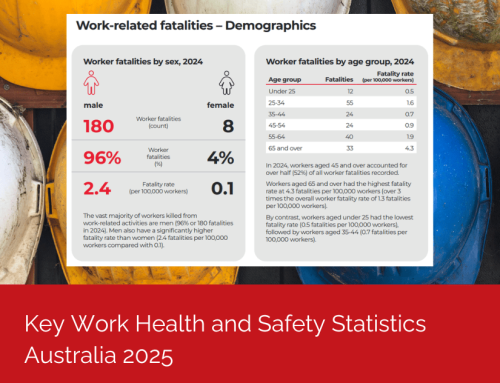
Avoiding training to prevent turnover can backfire. Take a fresh look at why training for employee retention is one of the smartest moves an employer can make.
It’s a familiar conversation in organisations:
CFO: “What if we train our people and they leave?”
CEO: “What if we don’t train them and they stay?”
This exchange captures a real dilemma – not just about staff turnover, but about return on investment. Many organisations hold back on training because they’re afraid of time and money invested if people leave.
But that hesitation can backfire. When teams don’t receive the training they need, the impact shows up in disengagement, safety issues, low confidence, and poor performance. What seems like saving money today can quietly cost your organisation tomorrow.
Capability strengthens commitment
We’ve seen first-hand that when organisations invest in structured training – especially in high-risk sectors like construction, utilities, transport, and logistics – their return on investment goes well beyond technical upskilling or ticking compliance boxes.
Employees who gain skills through training such as safety leadership, communication or leadership and management perform better; they gain confidence, become more engaged, and often stay longer. Training your people doesn’t only build their skills – it builds trust and commitment.
One participant in our programs told us, “Understanding the concept of ‘Above the Line’ and ‘Below the Line’ behaviours has been eye-opening. I can now see how the way I lead directly impacts those around me and the results we achieve.”
This demonstrates the shift does not stay with one person. When an employee changes how they show up, the benefits ripple can through the team – shaping culture, lifting performance, and strengthening results across an entire organisation.
How much time should you invest in training people?
Key to identifying how much time you should invest in training your people is understanding their gaps and ensuring the training gives them the capability, confidence and competence to complete their job tasks successfully by bridging those gaps.
Training can be delivered as short modularised workshops or as a longer term qualification. Earning a Certificate IV or Diploma does more than add a line to someone’s resume. It builds pride, confidence, and momentum in their role. From aged care to rail, we’ve seen qualifications transform how teams communicate, collaborate, and perform – lifting not just skills but culture.
When employees commit to a 12-month program (with just 8-10 training days across the year), they feel genuinely invested in. This sense of value and growth makes them more likely to stay – not only to complete their qualification but to keep contributing at a higher level.
For organisations, dedicating one day a month to growing your people’s capability is a small investment with a significant return.
Real work, real standards, real impact
Unlike generic short courses, LDN programs are built around real job roles. Learning is embedded into daily work, making it practical and aligned to business outcomes. It’s not extra work – it is the work.
Futhermore, LDN is a Registered Training Organisation (RTO) that meets ASQA (Australian Skills Quality Authority) compliance standards – the national regulator that ensures vocational education providers deliver high-quality, nationally recognised training. This means our programs build real capability, not just certificates.





